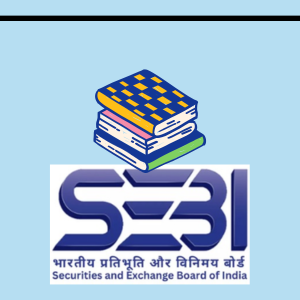
For the last few years, NeoBanks are being hailed as a revolution in the banking industry in terms of service and user accessibility. Have you ever heard of them?
In this article, Team YLCC explains the concept of NeoBanks and how they are going to gain significant relevance in the banking industry. Read on!
WHAT IS A NEO BANK?
A Neobank is a kind of digital bank without any branches. Rather than being physically present at a specific location, Neobanking is done entirely online. Neobanks are financial institutions that give customers a cheaper alternative to traditional banks. They leverage technology and artificial intelligence to offer personalised services to customers while minimising operating costs. Neobanks entered the financial system with the tag of ‘challenger banks’ because they challenged the complex infrastructure and client onboarding process of traditional banks.
In India, these firms don’t have a bank license of their own but rely on bank partners to offer licensed services. This is because the RBI does not allow banks to be 100% digital yet. The RBI remains resolute in prioritising banks’ physical presence, and has spoken about the need for digital banking service providers to have some physical presence as well.
The different models of NeoBanks include:
- Non-licensed FinTech (Financial Technology) firms that collaborate with conventional banks to have a mobile/Web platform and a wrapper around their partner banks’ products.
- Traditional banks that are undertaking their digital initiatives.
- Licensed neobanks (usually with digital banking licences in those countries that allow it).
Neobanks are customer-centric. They are up to date with the technical capabilities, and they solve the gaps of legacy infrastructure used in the traditional banking system. Whereas, traditional banks offer similar solutions to all the customer problems without accommodating changes in the business, technical and financial landscape. As a result, most companies move to neobanks due to the lack of comprehensive solutions to their problems stemming from additional service charges, outdated services, and uncompetitive pricing.
Regulatory Approach For Neobanks In India
The RBI, SEBI, and IRDA primarily regulate the Indian financial sector. When it comes to fintech, these regulatory bodies ensure a safe, consistent, and seamless financial sector growth and controlled accessibility to financial products in the digital mode. The regulatory framework also makes sure that the technological advancements in the financial services and banking sector are compliant with the existing norms. In the growing digital banking ecosystem, the next step would be that regulators update the existing regulations, including the business correspondence guidelines, so that neobanks have more flexibility for innovations.
With the commendable growth of the Indian fintech sector, the regulators have now introduced the ‘regulatory sandbox initiative’ to test new products/services in a controlled environment. The Video KYC, the Reserve Bank Innovation Hub, and the introduction of the Account Aggregator framework are some of the other initiatives allowed by Indian regulatory bodies. If this dynamic approach of the regulators continues, we can expect astronomical growth of the fintech industry soon.
TOP NEOBANKS IN INDIA
- Fi Money– Founded in 2019 by Sujith Narayanan and Sumit Gwalani, Fi is a financial app that offers digital bank accounts and financial advice to working professionals. It offers products such as a zero balance savings account and helps its users track expenses and organize their funds.
- Jupiter– Jupiter (see here) is a digital banking start-up that allows customers to set up their savings bank accounts with built-in money management features such as real-time spending reports, tracking liquid assets across bank accounts, personalized savings goals, and transaction management.
- RazorpayX– Partnered with RBL Bank, RazorPayX targets small and medium enterprises by providing them features to help ease their business operations. The current account provided by RazorPay allows its users to access features such as tax and vendor payment automation, business reporting, etc. The platform also provides corporate cards and instant loans with no collaterals to its users.
- PayTM Payments Bank– Payments Bank is India’s only mobile-first bank with zero balance — zero digital transaction charge. Paytm offers Paytm wallet and Savings bank account from Paytm Payment bank. Paytm Payments Bank is arguably the largest neobank in India.
- Instant Pay– InstantPay is one of the biggest neobank in India as it offers a banking platform to individuals and companies of all sizes and capacities. It processes numerous transactions per day. You can use InstantPay via its website or mobile application, whatever suits you. It is known for instant account opening, cash deposits, active account tracking, and a 24*7 customer support system. InstantPay has partnerships with banks such as Axis Bank, ICICI Bank, Indusind Bank and Yes Bank.
- OneCard– OneCard is a versatile platform & newcomer in the neo bank list. They also, provide exclusive offers on their card purchases & transactions. You get a big discount on online shopping sites like Bewakoof.com etc. & on food & dining like ‘The good bowl,’ ‘Firangi Bake,’ ‘Oven story,’ etc. And also, you can also avail of significant discounts on electronic sites like boAt & on health & wellness platforms like Sugar cosmetics & lifestyle segments like IGP. The card is best to be availed by those people who are new to the ‘credit card’ concept & are looking forward to earning rewards on every purchase. Also, oneCard has been featured in Your Story, Business Standard, Inc 42, Business Line, etc.
- Mahila Money– Created by Sairee Chahal, the creator of a female-only social media website “Sheroes”, Mahila Money is a Neobank that serves only female entrepreneurs from suburban and urban settings. The purpose of this platform is to provide female entrepreneurs without any micro-financial support an opportunity to start their own businesses. The platform also has community based features that allows users to interact and share experiences for the education of new entrants to the world of enterprise.
- FamPay– Partnered with IDFC First Bank, this Neobank platform currently only offers prepaid cards. The platform targets teenagers and intends to capitalise on the demographic’s need for financial freedom. The prepaid cards are issued by VISA and are numberless. The numberless feature allows teenagers to spend money from their prepaid cards without possibly compromising the security of their guardians account.
- UniCard- Uniorbit Technologies launched the UNI ½ Card & UNI ⅓ Card Neobank in India that VISA backs. They partnered with various banks for this launch, like the State Bank of Mauritius, RBL bank, and Liquiloans. The card operates differently than the traditional cards, where you can split your payments & are always in control of your transactions. It allows you to set your payment limit, lock & unlock your card, and decide on where & how to spend through their app.
PROS OF NEOBANKS
- The charges applicable for opening and maintaining a NeoBank account is often significantly lower when compared to that of traditional banks.
- NeoBanks are known for their great service. Most Neobanks provide round the clock service online and through their mobile application.
- It is very easy to manage the bank account, especially since there is zero need to visit a physical bank branch
- All leading NeoBanks have multiple levels of encryption and security so the money is completely safe.
- Most Neo Banks also offer certain additional features as compared to regular banks such as money management, recharge options, stock market investing, etc. within the same app which makes using it all the more interesting.
- In NeoBanks, the process of account creation is extremely straightforward and less time-consuming due to the online KYC process. Most NeoBanks can process the creation of a new account within a day if the customer submits the proper documents.
CONS OF NEOBANKS
- Neobanks are much less regulated than traditional banks. In some cases, neobanks may be operating without proper authorisation or licenses. In such a situation, if the NeoBank goes bankrupt, the money deposited by customers may fall in jeopardy.
- A major disadvantage of NeoBanks is the hefty cash withdrawal fees. Because NeoBanks focus on mostly digital transactions, most of them lack any ATMs of their own. This forces them to collaborate with other banks for their ATM services which leads to higher charges.
- The fact that NeoBanks don’t have a physical presence can be problematic for people who prefer face-to-face banking, especially in case of emergencies or contingencies.
- NeoBanks don’t offer all the facilities available in a traditional bank as they lack a proper banking license.
- NeoBanks can be very difficult to use for individuals who are not tech-savvy.
YLCC would like to thank its Content Team for their valuable insights in this article.






